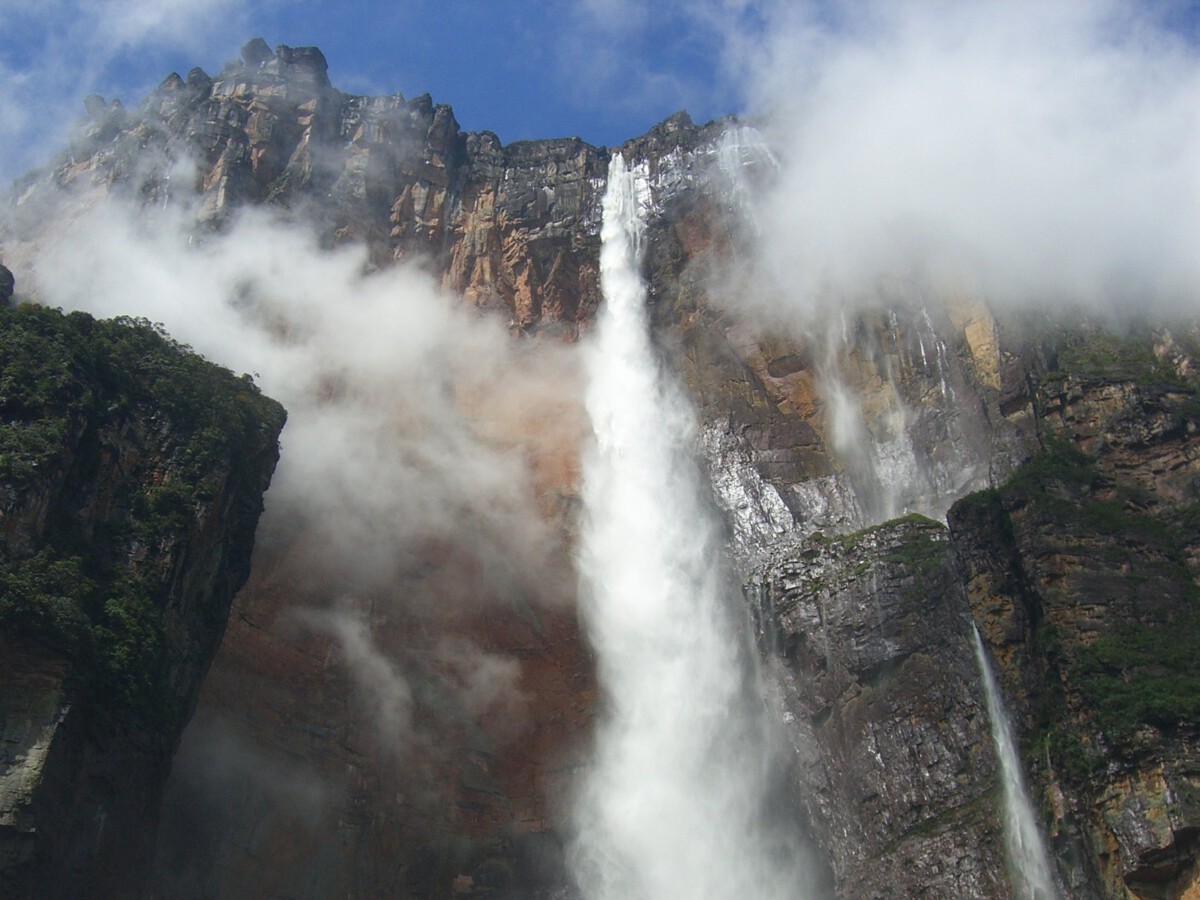The Great Barrier Reef, Australia

The Great Barrier Reef is more than just a stunning underwater landscape—it’s a living wonder of the world. Stretching over 2,300 kilometers, it supports around 1,500 species of fish and over 400 types of coral. But the reef is in real trouble. According to the Australian Institute of Marine Science, it has lost about half of its coral cover since 1985, with mass bleaching events becoming more frequent in recent years. Global warming, rising ocean temperatures, and pollution are causing the colorful corals to turn ghostly white, breaking the hearts of divers and marine biologists alike. While conservation efforts are ongoing, many experts warn that the reef’s current appearance may not last much longer. Snorkeling here now means experiencing a breathtaking world that might soon fade into memory. The sense of urgency is felt by visitors and scientists, as every year brings new challenges for this natural masterpiece.
Venice, Italy

Venice’s romantic canals and historic piazzas have lured travelers for centuries, but the city’s future is clouded by water—literally. Rising sea levels, stronger storms, and the sheer weight of mass tourism are eroding the city’s foundations. The city is sinking at a rate of about 1-2 millimeters each year, and some scientists warn that large portions could be underwater by the end of the century. UNESCO has expressed serious concern, at times even threatening to place Venice on its endangered heritage list. Floods, known as “acqua alta,” have become more frequent, causing disruption and damaging irreplaceable art and architecture. The city’s narrow alleys and beautiful bridges are still enchanting, but their days may be numbered. Walking across the iconic Rialto Bridge or gliding in a gondola is an experience that could soon change forever.
Machu Picchu, Peru

Shrouded in mist and mystery, Machu Picchu is a symbol of ancient ingenuity perched high in the Andes. It attracts millions each year, but the impact of so many footsteps is undeniable. The Peruvian government has imposed visitor limits and new ticketing systems to try to reduce wear and tear on the fragile stone terraces. Yet, concerns remain about erosion, landslides, and the unpredictable effects of increasing rainfall linked to climate change. Archaeologists have observed cracks and structural weaknesses in some of the site’s most famous buildings. The magic of standing among the ruins at sunrise is indescribable, but the future of Machu Picchu as we know it is uncertain. With preservation measures still a work in progress, it’s a place to see sooner rather than later.
The Amazon Rainforest

The Amazon, often called the “lungs of the Earth,” is vanishing at an alarming pace. Deforestation for agriculture, mining, and logging has already claimed about 17% of its cover in just five decades, according to the World Wildlife Fund. This is not just a local tragedy—the Amazon’s health is tied directly to the global climate. As the forest disappears, so do countless unique species, many of which remain undiscovered. Satellite images reveal scars of cleared land where jungle once thrived, and fires—both accidental and intentional—have become a seasonal heartbreak. Indigenous communities fight to protect their home, but the pressure is relentless. Traveling deep into the rainforest to hear the symphony of wildlife and witness towering trees is a privilege that future generations may not get to experience.
The Maldives

The Maldives looks like a dream—white sand beaches, turquoise waters, and overwater bungalows. But this paradise is at grave risk. The country’s average elevation is just 1.5 meters above sea level, making it one of the most vulnerable places on Earth to climate change. According to United Nations predictions, the Maldives could become uninhabitable by 2100 if sea levels keep rising at the current rate. Already, some islands have experienced flooding and erosion, forcing communities to relocate. Tourism is booming, but it’s bittersweet; many visitors feel a sense of urgency, knowing that these idyllic scenes might not last. Exploring the coral reefs and basking in the sun feels different when you realize you’re witnessing a vanishing world.
The Galápagos Islands, Ecuador

The Galápagos Islands are a living laboratory, famous for inspiring Charles Darwin’s theory of evolution. Today, however, the delicate balance of this ecosystem is under threat. Rising ocean temperatures, invasive species, and a steady stream of tourists are putting unique wildlife at risk. The Galápagos National Park has reported noticeable changes in animal populations and behaviors, with some species declining or shifting their habitats. Conservationists are racing to manage these challenges, but the pace of change is worrying. Walking among giant tortoises and blue-footed boobies is extraordinary, but even these legendary creatures are not immune to the pressures of a changing world. The islands’ wild charm may never be the same.
Petra, Jordan

Petra’s rose-red facades carved into desert cliffs are breathtaking, but the site’s survival is precarious. Every year, thousands of visitors tread the ancient stone paths, slowly wearing away the steps and monuments. The Jordanian government has acknowledged that erosion from foot traffic, wind, and occasional flooding is taking its toll. UNESCO has even placed Petra on its list of World Heritage in Danger, highlighting the need for more urgent protection. Some of the site’s most delicate carvings have already faded or crumbled. Exploring the Siq canyon and emerging to see the Treasury is like stepping into another world—one that’s vulnerable to the pressures of time and tourism. The sense of standing in history is powerful, but the worry about its future is just as real.
The Arctic

The Arctic is a land of extremes—icy landscapes, polar bears, and the magical northern lights. But this region is warming at twice the global average, according to the National Snow and Ice Data Center. The extent of summer sea ice has shrunk by about 40% since the late 1970s, and the trend is accelerating. Melting ice threatens not just polar bears and seals, but also indigenous peoples whose cultures and livelihoods are intertwined with the frozen environment. Cruise ships are now able to navigate routes that were once impassable, bringing more visitors to the region. The urgency to witness the Arctic’s wild beauty is growing, as scientists warn that the landscape could be unrecognizable within a few decades.
Yellowstone National Park, USA

Yellowstone is America’s original national park, renowned for its geysers, hot springs, and roaming bison. But the park is not immune to change. The National Park Service reports that rising temperatures could disrupt delicate ecosystems, altering migration patterns for elk and wolves and threatening iconic geothermal features. Invasive species are also a growing problem, impacting native plants and animals. Record numbers of visitors have been recorded in recent years, sometimes straining the park’s capacity and leading to trail erosion and habitat disturbance. Standing on the boardwalk at Old Faithful or watching a herd of bison cross the valley is iconic, but these scenes are increasingly vulnerable to the pressures of a changing world.
The Taj Mahal, India

The Taj Mahal’s gleaming white marble is the stuff of legends, yet this symbol of love faces real peril. Pollution from nearby factories and vehicles has caused noticeable discoloration, leading to a yellowish tint on parts of the building. The Archaeological Survey of India has tried various cleaning techniques, but the problem persists. In addition, the rising water table in Agra threatens the monument’s foundation, raising concerns about long-term stability. Extreme weather and humidity fluctuations are also affecting the intricate inlay work. The Indian government has begun restricting visitor numbers to help preserve the site, but time may be running out. Gazing at the Taj Mahal’s elegant domes and reflecting pools is magical, but the opportunity to see it in its full glory may not last much longer.





